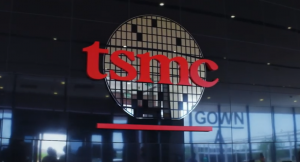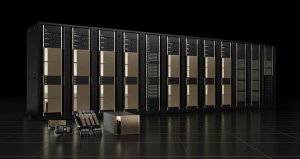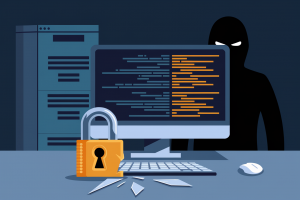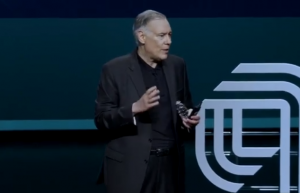Review: Nook HD+ Tablet — Android Catches Up with Apple at Half the Price
![]() Overall Android tablets have been disappointing. They are smaller than the iPad with inferior displays and many fewer applications. The only area where they have matched Apple’s thoroughbred has been price — leading contenders like the Samsungs are expensive, while inexpensive tablets from Amazon and Barnes & Noble (BN) have been little more than glorified e-book readers.
Overall Android tablets have been disappointing. They are smaller than the iPad with inferior displays and many fewer applications. The only area where they have matched Apple’s thoroughbred has been price — leading contenders like the Samsungs are expensive, while inexpensive tablets from Amazon and Barnes & Noble (BN) have been little more than glorified e-book readers.
On October 9 that changed with the release of the BN Nook HD+. In many ways this tablet is equivalent to the iPad — the same size, the same eye-popping display — at half the weight (18.2 oz), half the thickness (0.45″), and just over half the cost. It still is behind in applications, but the main question is whether BN can put real marketing muscle behind this and its little brother, the Nook HD, to capture a major market. Because these tablets can deliver the goods.
I preordered my Nook HD+ in early October, as soon as it was announced. Before I go any further I want to be clear on one point. I do not now, nor have I ever had any business relationship with BN. I am a customer, but I am also a customer of Amazon.com and Apple. And when I say “my Nook”, I mean I paid full price ($300 for the 32 GB version) for it. I am not reviewing a free loaner and have no connection with BN PR, who have no idea I am writing this review.
The specifics
Physical Design: The Nook HD+ has a clean, well thought-out design. It is almost exactly the same size as the full iPad to the extent that it can use iPad cases. It has three physical buttons: The on/off switch on right side near the top (when holding the tablet vertically), the volume rocker switch on the top edge, and a silver horseshoe that is the Nook logo but also a functional switch. You use that to wake the HD+ up or close a program and return to the home screen. Everything else is done with virtual buttons. It also has a nice grommet hole in one corner where I attached a wrist strap. That lets me protect against dropping the Nook while I carry it around and prevents a thief from stealing it right out of my hands, an experience several tablet users have reported over the years.
The display is incredible, far superior to the display on my Acer laptop. BN says it is equivalent to the iPad retinal display in both pixel density (1920 x 1280) and brightness. After comparing it to two iPads, I agree. I use a photo of my dog to show off the display. You can clearly see individual hairs on her nose, and she jumps off the screen. The display reorients quickly between horizontal and vertical as you turn the device and can follow you through a 360° turn. And it supports the screen pinch gesture for zooming.
Input: The Nook comes with a virtual Qwerty keyboard, and you can touch-type on it in horizontal display mode. I wrote this review on that keyboard. It also supports Bluetooth, and I had no problem connecting it with a folding Bluetooth keyboard I had from my old Palm PDA days. I used this combination to take notes at a conference, appropriately on e-publishing, that I covered live on November 8 and 9, two days after I got the Nook.
Reading experience: Because it is lighter than the iPad, it is easier to hold when reading for long periods, which is important since the main reason that I bought the larger tablet was to read e-magazines. The reading experience is excellent. I actually prefer to read magazines on the Nook over paper. And I have been able to read comfortably on it outside in full daylight, although I have not tried that on the beach at noon on a sunny day.
Battery life is good. The first full day I had it I purposely tried to run the battery dead. After 13 hours of use, including installing and trying several apps and two magazines, reading my e-mail and surfing the Web, I still had about 15% battery life when I plugged it back in. At the conference I took notes on it all day using a Bluetooth keyboard. Bluetooth drains batteries, but after a full work day the Nook still had 20% of its battery life.
Connectivity: The design emphasis on simplicity and utility extends to its connections. Its charger cord doubles as a USB connector, allowing me to connect the tablet physically to my laptop and transfer files. That is very useful. It of course supports WiFi, but it does not have cellular support at this time.
Memory cards: It uses micro-SDs. It uses the card to store movies, and, I suspect, TV shows from Hulu, which comes pre-installed, so if you plan to use it for watching, you will want to get a high capacity card. In any case, one rule I learned long ago is you can never have enough storage on a handheld device.
Disappointments
My biggest negative is that the shopping is restricted to the BN Nook store, and the app selection is limited. I cannot buy and load apps from the Google Play store. That means that I cannot install the Android version of my favorite calendaring and personal information manager app, Pimlical, or the alternative keyboard I use on my Android smart phone, which is designed for stand-up single finger typing, among other apps. I can’t even get the reader for e-book pioneer eReader (originally Peanut Press), which BN owns. I have 300+ eReader books that I purchased starting in the mid-1990s originally to read on my Palm PDAs. Of course I can read them on my smartphone, but I chose the Nook over the Amazon Kindle HD partly because I expected to be able to put those apps on it.
However, the software that is available seems high quality and useful. The BN store offers two Office-clone suites, for instance, and it does sell a terminal application, Splashtop, that lets me run my core productivity software on my laptop from the tablet. It is certainly not as good as having the apps on the Nook, but it’s better than nothing, and since Quicken and CalorieKing do not have Android versions at this time, it is the best I can get barring buying a Windows 8 tablet.
I did have one strange episode three days after I got the Nook. It suddenly refused to wake up for about a half hour, and for a few minutes I thought it was dead. Then it started working again and has been fine since. My wife also seems to have a problem getting it to respond to her touch sometimes, and I have occasionally also had a similar problem, although I find that I can usually get it to do what I want if I push a little harder for a little longer. But that may just be my tablet, and otherwise it has performed very well.
Conclusion
I certainly can recommend this tablet based on my first full week using it. It does tie you to Barnes & Noble for books, while Apple allows you to install e-book readers from any publisher you wish, and overall it has fewer apps than Apple. But at nearly half the price it provides an experience that is pretty close, and at half the weight it is easier to hold and carry around. And if you are considering the iPad Mini you might want to look at the BN Nook HD, the 7-inch version of the tablet I am using.
From the corporate IT perspective, this should be a strong contender for companies looking for a standard tablet for employees. The combination of high functionality, standard Android environment as opposed to the Kindle’s semi-proprietary environment, high definition display and low price, makes it a winner.
A message from John Furrier, co-founder of SiliconANGLE:
Your vote of support is important to us and it helps us keep the content FREE.
One click below supports our mission to provide free, deep, and relevant content.
Join our community on YouTube
Join the community that includes more than 15,000 #CubeAlumni experts, including Amazon.com CEO Andy Jassy, Dell Technologies founder and CEO Michael Dell, Intel CEO Pat Gelsinger, and many more luminaries and experts.
THANK YOU















